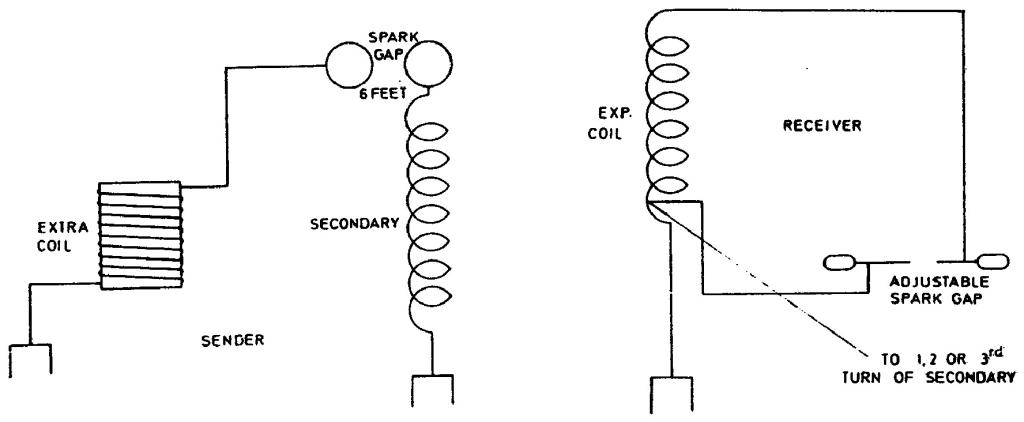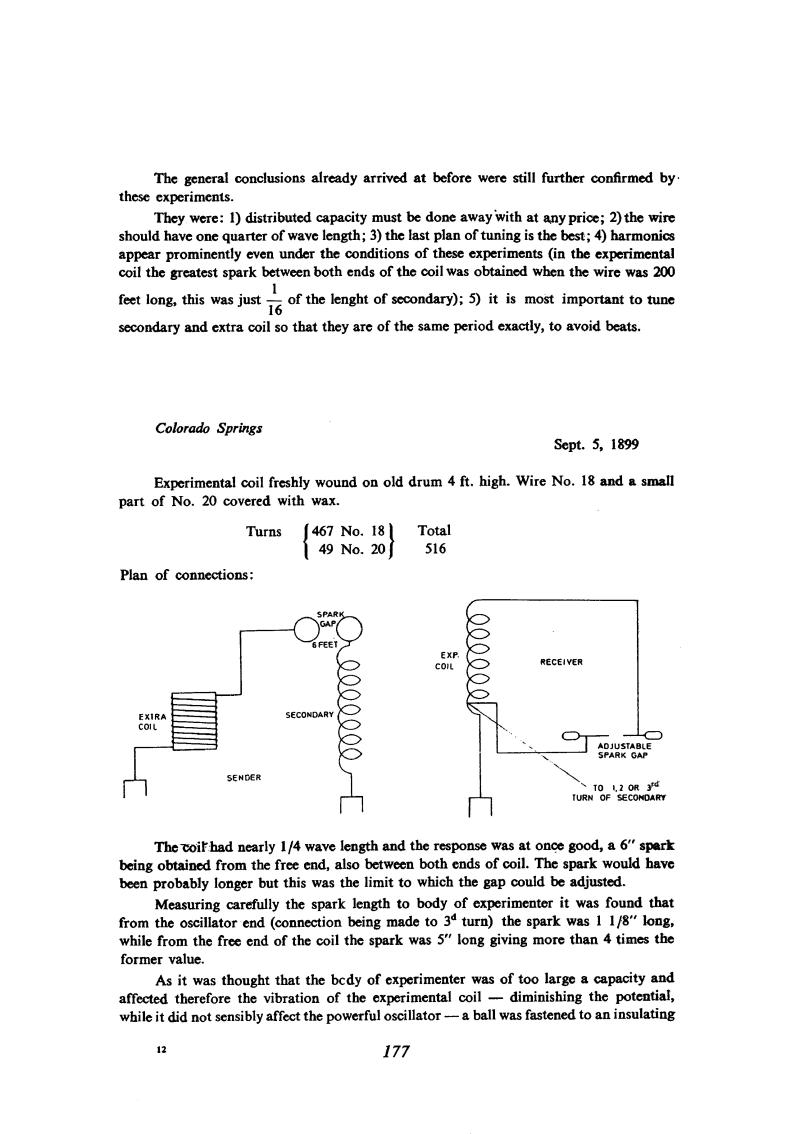
Nikola Tesla Books
The general conclusions already arrived at before were still further confirmed by these experiments.
They were: 1) distributed capacity must be done away with at any price; 2) the wire should have one quarter of wave length; 3) the last plan of tuning is the best; 4) harmonics appear prominently even under the conditions of these experiments (in the experimental coil the greatest spark between both ends of the coil was obtained when the wire was 200 feet long, this was just $! {1 \over 16} $! of the length of secondary); 5) it is most important to tune secondary and extra coil so that they are of the same period exactly, to avoid beats.
Colorado Springs
Sept. 5, 1899
Experimental coil freshly wound on old drum 4 ft. high. Wire No. 18 and a small part of No. 20 covered with wax.
| Turns | 467 No. 18 49 No. 20 |
Total 516 |
Plan of connections:
The coil had nearly 1/4 wave length and the response was at once good, a 6" spark being obtained from the free end, also between both ends of coil. The spark would have been probably longer but this was the limit to which the gap could be adjusted.
Measuring carefully the spark length to body of experimenter it was found that from the oscillator end (connection being made to 3d turn) the spark was 1 1/8" long, while from the free end of the coil the spark was 5" long giving more than 4 times the former value.
As it was thought that the body of experimenter was of too large a capacity and affected therefore the vibration of the experimental coil - diminishing the potential, while it did not sensibly affect the powerful oscillator - a ball was fastened to an insulating
177
Eccles, W. H. WIRELESS, Thornton Butterworth Ltd, London, 1933.
September 5
After a number of experiments, including a few outside the laboratory, Tesla once more concludes that parasitic capacity is very harmful, so he decides to try winding a coil to have minimum capacitance. Unfortunately he does not describe how this was done. In his desire to get the maximum possible voltage from the coil he went as far as thinking that it was best to have no capacity at the free terminal. From one aspect he was right (theoretically a coil gives the highest Q-factor with the least capacity in the resonant circuit), but without the âelevatedâ metal sphere the received signal was much weaker because the free terminal of the coil no longer had a monopole antenna. In the circuit which he in fact used he did not, however, go to such extremes. He added the âexperimentalâ coil but left the metal sphere (aerial capacity) connected to one end of the sensitive device.


